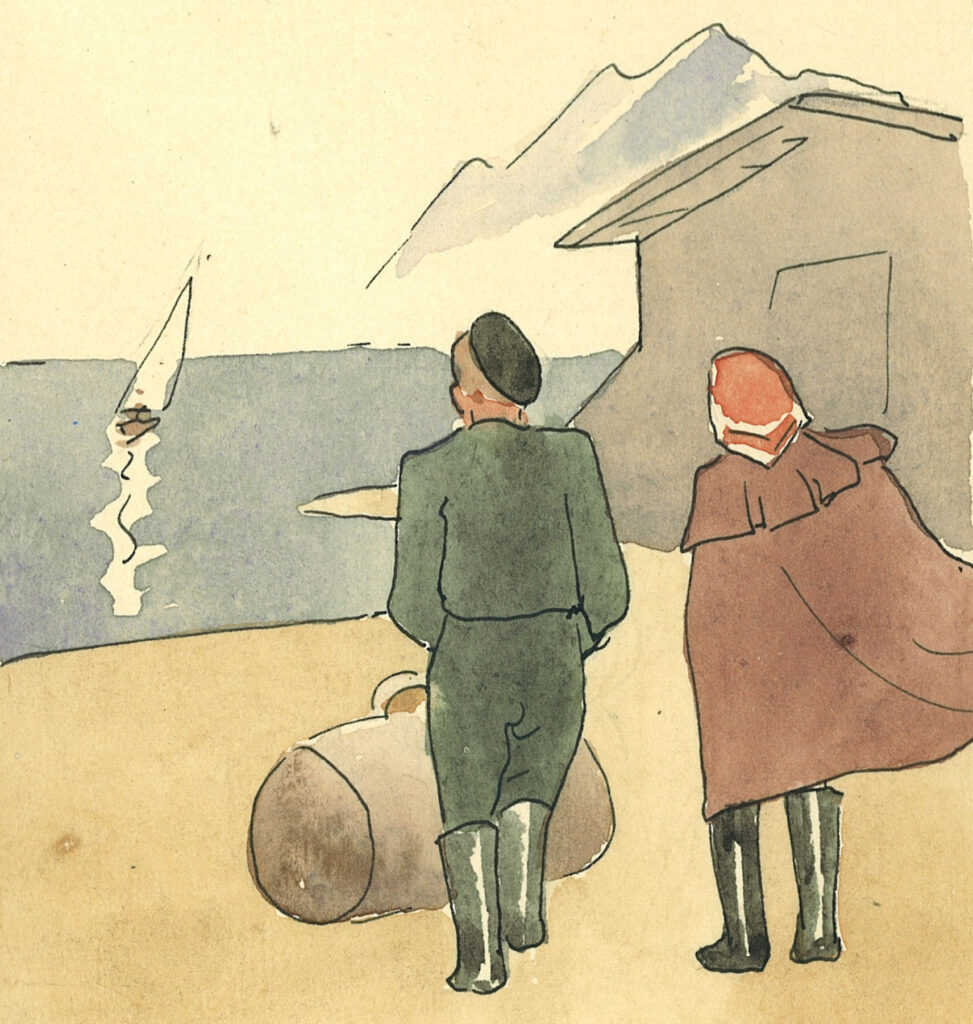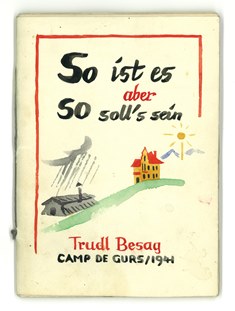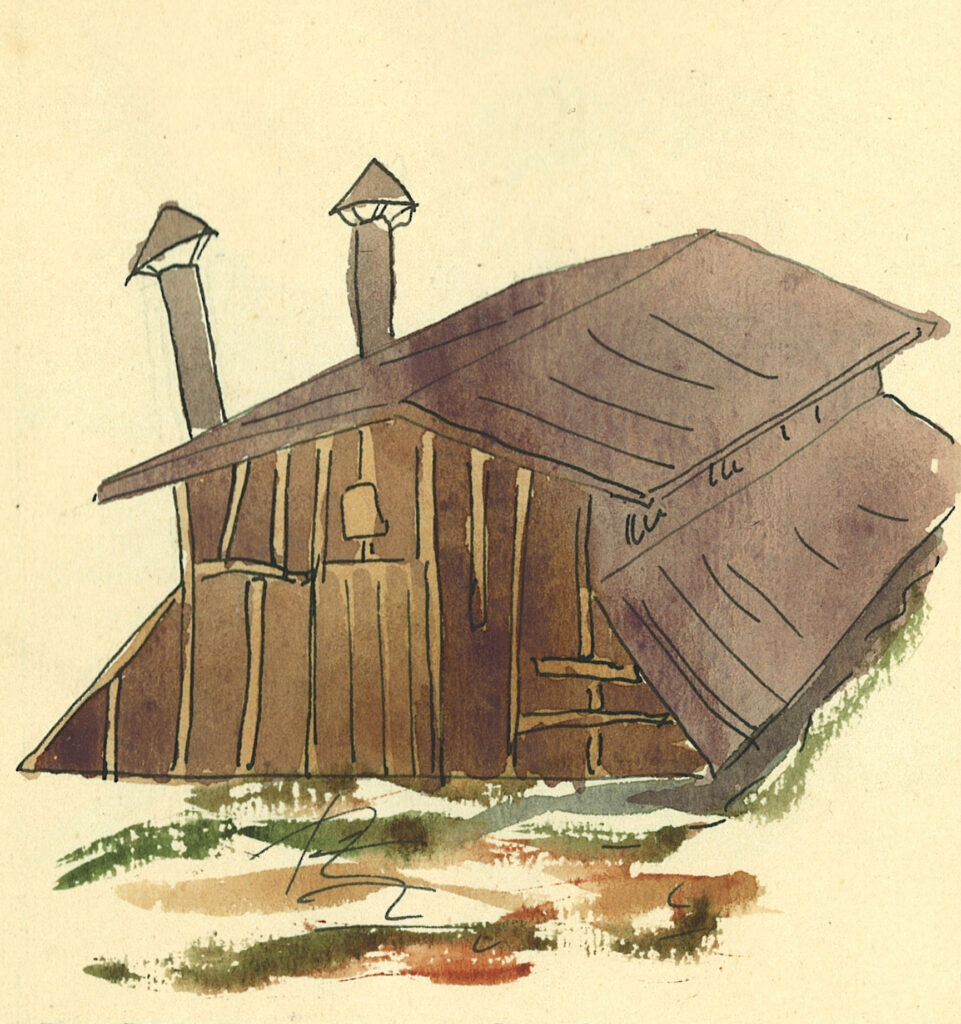How It Is, But How It Should Be: An Imagined Life Outside Of Gurs
A birthday present presented to a prisoner by her friend in honor of her sixty-fifth birthday. A seemingly simply gift, a book of hand drawn illustrations and poetic text reflecting the conditions inside the camp, and the wish for an imagined life of freedom, a dream of “how it should be.” The result is a beautiful and moving story and exhibition of not only the struggle for survival, but of one woman’s effort to preserve her humanity and comfort her friend under some of the worst circumstances imaginable.
So ist es, aber, so soll’s sein (How it is, but how it should be) is a rare and powerful piece of Holocaust artwork and poetry from the permanent collection of Illinois Holocaust Museum.
Trudl Besag was a young Jewish woman imprisoned in Gurs concentration camp in unoccupied France since 1940. In 1941, she made an illustrated book and gave it to a fellow prisoner, Rosa Hirschbruch, for her 65th birthday and titled So ist es. Sharing the excruciating daily life in Gurs concentration camp in France on the left-hand pages, while the right-hand pages describe a vision of life outside the camp.
So ist es vividly illuminates the daily life in Gurs, presents a portrait of resistance through beautiful and humorous response to imprisonment, and captures the will of prisoners to survive in the hopes of a new life. The exhibit contains translations by the artist herself and additional elements tell the broader story of Camp de Gurs, the Holocaust in France and the incredible story of survival of these two women.
The exhibition How It Is, But How It Should Be showcases the book’s strikingly colored pages alongside the English translation Trudl wrote in the 1990s, replica copies of So ist es, a moving audio recording of the original, rhyming German text, and a short film about the history of Gurs including survivor testimony. The exhibition also includes a gallery guide and a beautiful companion catalogue.



ABOUT CAMP DE GURS, THE ARTIST AND RECEIPIENT
Camp de Gurs was located in the south of France. It was operated by the collaborationist government of unoccupied France, whose capital was Vichy. During its period of operation (1939-1944) the camp served as a prison for different peoples: Spaniards and foreign fighters fleeing the Spanish Civil War, anti-Nazi resistance members, and Jews. In 1940, the Vichy government took in approximately 7,000 Jews deported from southwestern Germany, including Trudl and her sisters, Rosa, and Rosa’s husband, Samuel Hirschbruch. Conditions were harsh, with cramped quarters, scarce food and supplies, and rampant disease; approximately 1,100 prisoners died during their internment, including Samuel. By the time the camp temporarily closed in November, 1943, 22,000 men, women, and children had been interned in Gurs, 18,000 of them Jews.
Trudl Besag was born in Frankfurt, Germany, in 1916 and raised in Baden Baden. While studying art at the University of Munich, she became engaged to an American engineering student, George Healy. In October 1940, Trudl and her family were deported to Camp de Gurs, an internment camp in Unoccupied France. While there, Trudl continued making art to pass the time, document her experience, and entertain her fellow prisoners. George Healy was able to secure Trudl’s release from Gurs and immigration to the United States, where the couple married in late 1941. Trudy, as she was then known, passed away in 2000. Rosa Hirschbruch, the recipient of Trudy’s book, also survived the Holocaust and lived in Chicago until her death in 1962.
On display at:
Hillel Foundation – University of Wisconsin: Through July 12, 2024
Photo credits: Emily Mohney
